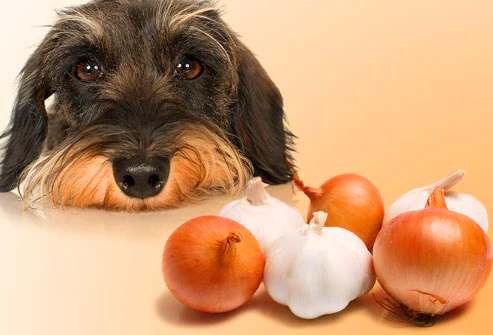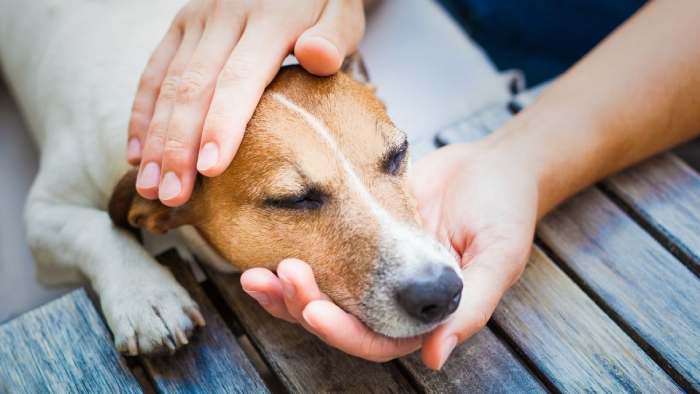Just as you chop garlic for dinner, your pup looks up with those pleading eyes. You’ve heard rumors about garlic being bad for dogs, but what’s the truth?
Dive into the evidence as we explore garlic’s toxicity, health implications, and the safe dosage for your canine companion.
Learn to recognize poisoning symptoms and use the best treatment and prevention strategies.
Keep your furry friend safe with the facts on garlic.
Risks Associated with Garlic Consumption:

Since garlic belongs to the Allium family, you must know that even small amounts can be toxic to dogs. Comparative toxicity studies have shown that garlic is less toxic to dogs than its Allium siblings, like onions. However, it contains thiosulfate, which can cause oxidative damage to red blood cells, leading to hemolytic anemia in dogs.
Garlic myths often perpetuate the idea that it’s a harmless natural remedy; however, scientific evidence underscores its risks to canine health. The degree of toxicity is dose-dependent, meaning the more garlic a dog consumes, the greater the risk of developing complications.
It’s crucial to prioritize factual information and ensure your dog’s diet is safe from this common kitchen ingredient.
Garlic’s Health Implications: Potential Negative Effects on Canine Well-being
You should be aware that a dog’s consumption of even a small quantity of garlic can lead to significant health complications. While garlic benefits are well-documented for human consumption, including its anti-inflammatory and cardiovascular benefits, the same does not hold true for your canine companions. Here’s a factual breakdown:
| Effect on Dogs | Effect on Humans | Substance Involved |
|---|---|---|
| Hemolytic Anemia | Reduced Risk of Certain Cancers | Organosulfur Compounds |
| Gastrointestinal Irritation | Lower Blood Pressure | Allicin |
| Liver Damage | Antimicrobial Properties | Thiosulfates |
| Toxicity | Boosted Immune Function | Disulfides |
Garlic’s organosulfur compounds, allicin, and thiosulfates, which offer nutritional perks for you, can cause oxidative damage to a dog’s red blood cells, leading to anemia, and may harm their liver and gastrointestinal tract. Always keep garlic and garlic-infused foods out of your dog’s reach.
Safe Garlic Dosage for Dogs: Guidelines for Responsible Use, if Any
Despite the risks outlined, it’s crucial to understand that there isn’t a universally safe garlic dosage for your dog, as even small amounts can be harmful. Studies have shown that susceptibility to garlic toxicity can vary greatly depending on the breed, age, and health of the dog, with certain breeds exhibiting higher breed sensitivity. This means that a dose considered safe for one dog may be detrimental to another.
If you’re looking to bolster your dog’s diet with beneficial nutrients found in garlic, consider garlic alternatives that are specifically formulated for canine health. These products often contain the desired compounds found in garlic without the toxic elements.
Always consult a veterinarian before introducing any new supplement or food into your dog’s diet to ensure it’s appropriate and safe.
Recognizing Garlic Poisoning Symptoms: Identifying Signs of Toxicity

If your dog ingests garlic, watch for signs of poisoning, which can manifest within a few hours to several days. Garlic contains thiosulfate, which is toxic to dogs and can lead to a condition called hemolytic anemia. Promptly recognizing symptoms is crucial for your dog’s health.
Here are key indicators of garlic poisoning:
- Garlic breath: An unusual garlic odor on your dog’s breath can be an early sign.
- Vomiting episodes: Repeated vomiting may occur as the body attempts to expel the toxic substance.
- Lethargy: Your dog might appear unusually tired or weak, indicating a systemic response to the toxin.
- Pale gums: A sign of anemia, pale gums indicate a serious impact on red blood cell health.
If you notice these symptoms, contact your vet immediately.
Treatment and Prevention Strategies: Responding to Garlic-Related Issues in Dogs
When your dog has ingested garlic, immediate veterinary care is essential to treat potential poisoning and prevent further health complications effectively. Contrary to garlic myths suggesting small amounts might be safe, the risk to your dog’s health isn’t worth the uncertainty. Veterinary advice is clear: any garlic ingestion warrants a prompt response.
Your vet may induce vomiting or administer activated charcoal to prevent further absorption of the toxins. They’ll also likely recommend supportive care, including IV fluids to combat dehydration and assist kidney function.
For prevention, always keep garlic out of reach and educate yourself on foods that contain hidden garlic. Double-check ingredients in treats and table scraps. With these strategies, you’ll safeguard your furry friend’s health against the risks of garlic toxicity.
Frequently Asked Questions:
You’re anxious about the recovery timeline post-garlic poisoning, aren’t you? Generally, dogs can fully recover without long-term effects with prompt garlic antidotes, but it’s crucial to follow evidence-based, nutritionally focused care.
Yes, breed sensitivity to garlic toxicity varies due to genetic factors. Some breeds metabolize foods differently, impacting nutritional outcomes and susceptibility to harmful substances, making them more or less vulnerable to garlic’s effects.
Cooking garlic alters its chemistry, potentially lowering toxicity thresholds for dogs. For instance, roasted garlic has different compounds than raw, which might affect its toxicity, emphasizing the need for nutritional care in pet diets.
You should avoid giving your dog foods with garlic flavoring, including powder or infused oils, as they can trigger garlic allergies and don’t contribute to breath freshness or nutritional benefits for your pet.
You should know that 90% of flavorings don’t pass fully digested. Garlic metabolites in fecal matter could cause toxicity if your dog ingests it. Fecal analysis often reveals undigested compounds, reflecting potential nutritional hazards.
Conclusion:
In conclusion, garlic is like a double-edged sword for your dog: potentially beneficial in minuscule amounts but largely dangerous. Stick to safe dosages and be vigilant for signs of poisoning. Should symptoms arise, seek veterinary care immediately.
Prevention is key, so keep garlic-laced foods out of reach and consult a vet before any dietary changes. Your furry friend’s health relies on your informed choices and prompt action in the face of potential toxicity.

Hey there, I’m Janet Brooks, a dog-loving student from California. I’m all about helping pups in need, especially those without homes. Me and my awesome friends work together to give shelter and love to stray dogs. Oh, and I also write blogs about dogs to share helpful info.